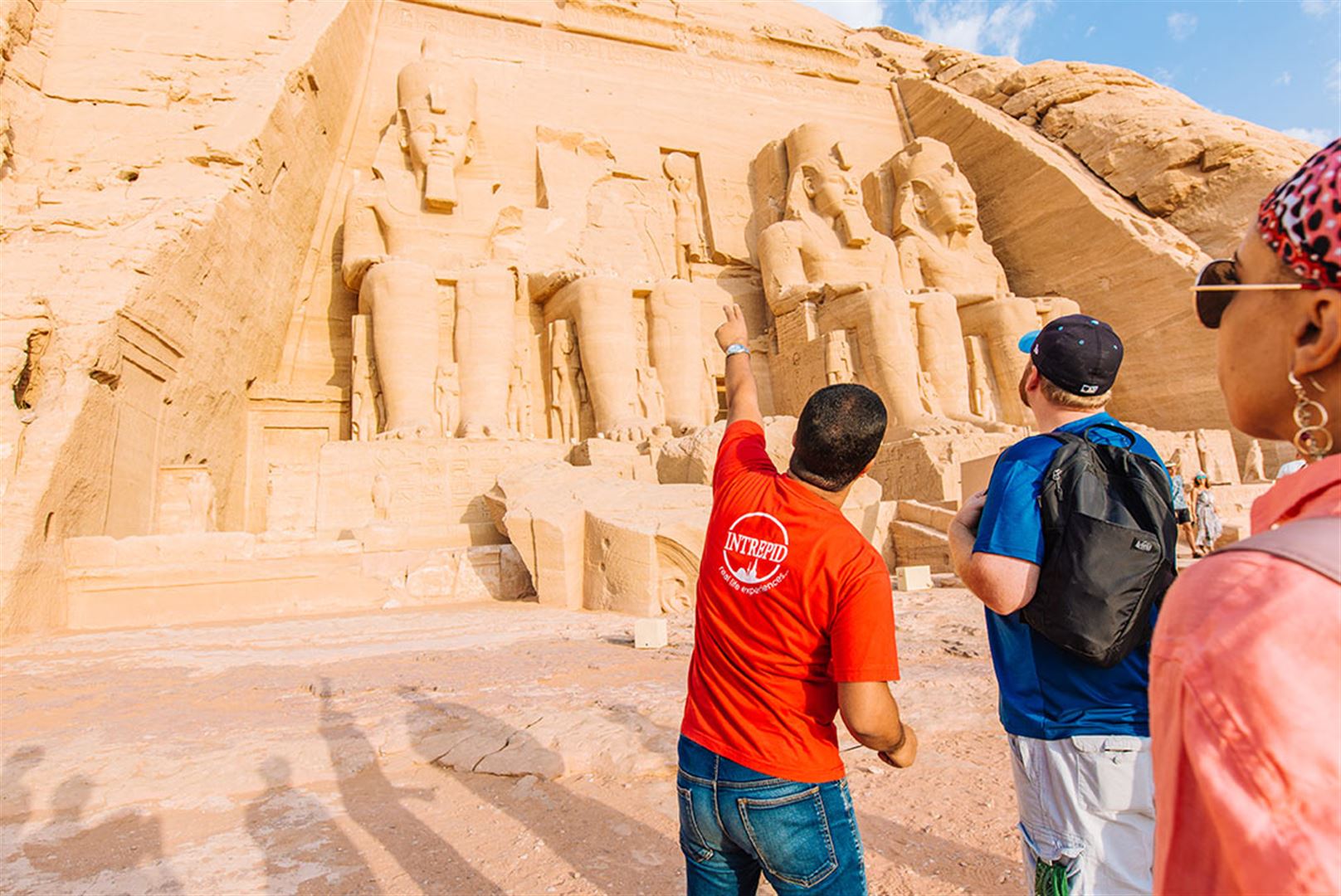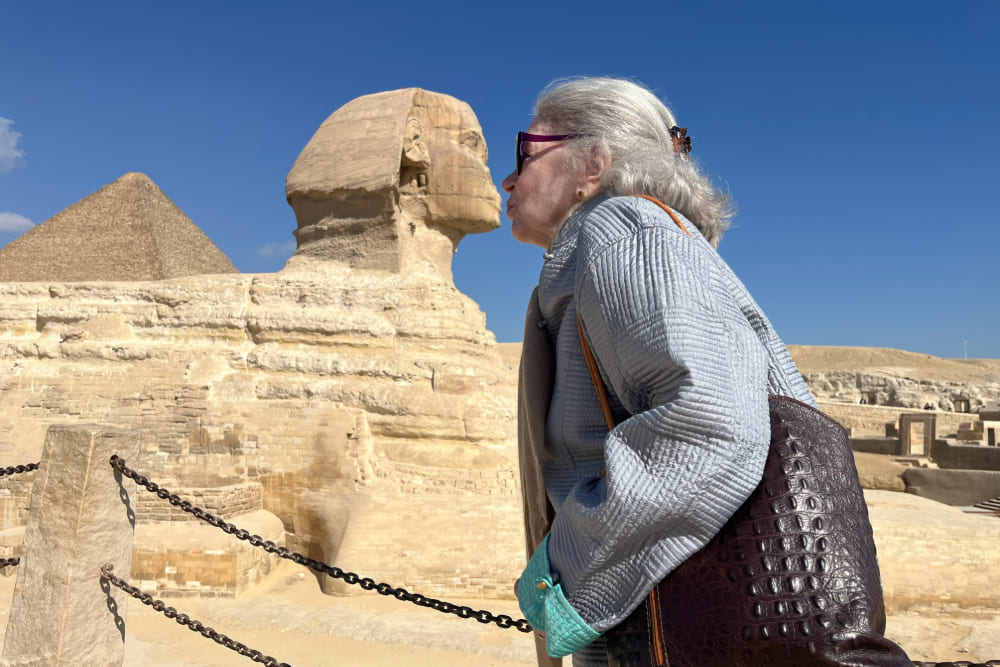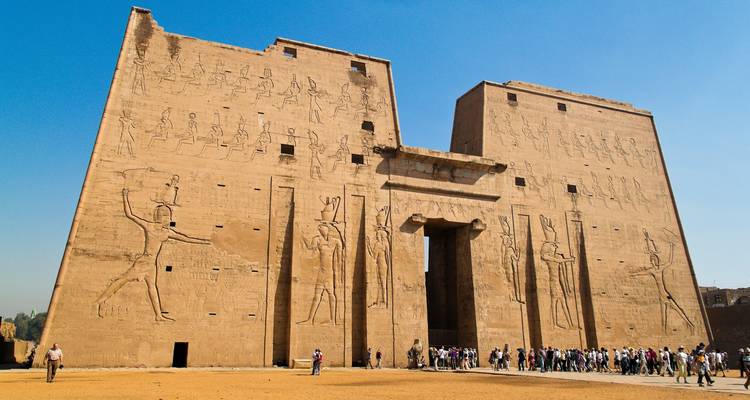Jordan and Egypt in One Trip: A Canadian Traveller’s Dream Itinerary
Jordan and Egypt: Two Fascinating Destinations
Overview of Jordan
Jordan is a land of stunning contrasts, where ancient history and breathtaking landscapes come together harmoniously. It is home to the world-famous archaeological site of Petra, often referred to as the "Rose City," which epitomises Jordan's rich heritage. Visitors can explore:
- The ancient city of Petra: Sprawled amidst majestic mountainous terrain, Petra’s carved façades and historical significance leave a lasting impression.
- Wadi Rum: Known as the “Valley of the Moon,” this majestic desert captivates adventurers with its surreal rock formations and offers opportunities for jeep tours and camping under the stars.
- Dead Sea: Famous for its buoyant waters and mineral-rich mud, it provides a unique experience of floating while relaxing amidst stunning views.
Jordan's warm hospitality and deep-rooted culture enrich every visit, making it an inviting destination.
Overview of Egypt
Egypt, synonymous with iconic landmarks and a profound cultural legacy, offers a captivating glimpse into the past. The majestic pyramids of Giza stand as a testament to ancient engineering marvels and attract millions of visitors annually. Notable highlights include:
- The Great Pyramid and the Sphinx: These monumental structures exude history and mystique, stirring the imagination of all who visit.
- Luxor and the Valley of the Kings: Home to the tombs of pharaohs, a journey here reveals the incredible artistry and history of ancient Egypt.
- Nile River Cruises: These cruises provide a unique opportunity to view temples and tombs from the comfort of a boat while enjoying the serenity of the river.
Egypt’s rich tapestry of cultures, traditions, and historic wonders creates an unforgettable adventure, appealing to history buffs and casual tourists alike.

Planning Your Trip
Best Time to Visit
When planning a trip to Jordan and Egypt, timing plays a crucial role in enhancing the experience. The ideal months to visit are typically from October to April. During this period, the weather is more agreeable, with temperatures ranging from mild to warm, making it perfect for exploring outdoor attractions.
- Jordan: The spring bloom in March and April transforms landscapes, while the cooler autumn months are excellent for desert adventures.
- Egypt: The mild winter months provide comfortable conditions for visiting pyramids and temples and enjoying Nile excursions.
However, if one finds themselves in either destination during the summer, early mornings or late afternoons are the best times to explore.
Visa Requirements
Visa requirements vary significantly between Jordan and Egypt, so it's essential to check the specifics before travelling.
- Jordan: Many nationalities can obtain a visa on arrival; ensuring the passport is valid for at least six months is crucial.
- Egypt: An e-Visa is available, which can be conveniently applied for online before departure, making the process hassle-free.
Always confirm the latest regulations to avoid any last-minute surprises at the airport.
Currency Exchange Tips
When exchanging currency, knowing where and how to do it can save travellers both time and money:
- Local Currency: The currency in Jordan is the Jordanian Dinar (JOD), while Egypt uses the Egyptian Pound (EGP).
- Exchange Methods: Banks usually offer the best rates, while currency exchange offices can be handy within airports and tourist areas.
- ATMs: Widely available, ATMs often dispense local currency at competitive rates; however, it's wise to inform your bank before travelling to avoid transaction issues.
Being well-prepared with this information can make the travel experience more enjoyable and stress-free.

Exploring Jordan
Must-See Attractions in Jordan
Jordan is brimming with attractions that will captivate any traveller. Among the most iconic is Petra, a UNESCO World Heritage site famed for its rock-cut architecture and water conduit system. Visitors can explore its vast expanse, with highlights including:
- The Treasury: This stunning façade greets first-time visitors and is a must-have photo opportunity.
- The Monastery: A bit of a hike but worth every step for its monumental size and breathtaking views.
- Wadi Rum: Known for its dramatic desert landscapes, it's an adventurous playground for hiking, rock climbing, and camel rides.
Other notable sites include the Roman ruins of Jerash, which transport visitors back in time, and the breathtaking views of Mount Nebo, where it's believed Moses gazed over the Promised Land.
Cultural Experiences in Jordan
Immersing oneself in Jordanian culture can be just as rewarding as visiting its landmarks.
- Traditional Bedouin Hospitality: Experience the warmth of a Bedouin camp; enjoy storytelling around a fire while sipping mint tea.
- Local Festivals: If timing allows, engaging in local festivals such as the Jerash Festival of Culture and Arts provides insight into Jordan's vibrant arts scene.
These experiences not only enrich your understanding of the local culture but also create unforgettable memories.
Culinary Delights to Try
Jordanian cuisine speaks volumes of its rich history and diverse influences. Here are some culinary delights not to be missed:
- Mansaf: A traditional dish of lamb cooked in a sauce made of fermented, dried yoghurt, served over rice. It's often served during celebrations.
- Falafel and Hummus: Legendary in their own right, these make for a perfect snack or light meal.
- Zaatar Manakish: A delicious flatbread topped with a mix of za'atar spice, olive oil, and cheese, best enjoyed fresh from local bakeries.
Sampling these dishes allows for a deeper appreciation of Jordan's gastronomic heritage, making any trip memorable.
Discovering Egypt
Top Attractions in Egypt
Egypt is a treasure trove of ancient wonders and vibrant history, with countless attractions that leave visitors in awe. At the forefront of these is the Pyramids of Giza, a quintessential symbol of ancient Egypt. Notable highlights include:
- The Great Pyramid: The only surviving wonder of the ancient world, a visit here is a must for its breathtaking scale.
- The Sphinx: This enigmatic creature stands guard, fascinating visitors with its storied past.
Venturing further south, the Luxor Temple and the Valley of the Kings offer a peek into the grandeur of pharaonic history. Here, the tombs of legendary kings such as Tutankhamun reveal incredible hieroglyphics and artefacts.
Cultural Immersions in Egypt
Diving into Egyptian culture enhances the experience manifold. Visitors can engage in:
- Traditional Music and Dance Experiences: Attend a local performance to immerse yourself in the rhythms and stories of Egyptian folklore.
- Nile Felucca Rides: Enjoy a tranquil sail on a traditional wooden boat and witness life along the riverbank, an experience that feels like stepping back in time.
These cultural interactions deepen one's appreciation for the rich tapestry that is Egyptian life.
Unique Egyptian Cuisine to Sample
As one eats their way through Egypt, an array of unique dishes tantalises the palate. Key culinary delights include:
- Koshari: A beloved street food staple made of rice, lentils, pasta, and topped with a spicy tomato sauce.
- Fattah: A festive dish of rice, bread, and meat in an aromatic vinegar sauce, often served at special occasions.
- Soupes and Salads: Egyptian lentil soup and a variety of salads, like Fattoush, provide fresh and flavorful additions to any meal.
Sampling these dishes not only satisfies hunger but also offers a delicious way to experience the essence of Egyptian culture.
Navigating Between Jordan and Egypt
Transportation Options
When planning to navigate between Jordan and Egypt, several transportation options are available that cater to various preferences and budgets.
- Buses: Reliable and cost-effective, buses connect major cities such as Amman and Cairo. Companies like Jett provide comfortable, air-conditioned services, making the journey enjoyable.
- Private Transfers: For a more personalised experience, consider hiring a private car. This option allows flexibility in travel times and stops along the way.
- Ferries: Travellers can also opt to take a ferry across the Gulf of Aqaba, connecting Jordan to Egypt’s Sinai Peninsula. This scenic route is perfect for those looking to enjoy beautiful coastal views.
Border Crossing Tips
Crossing the border between Jordan and Egypt is a straightforward process, but preparation is key.
- Documentation: Ensure you have all necessary travel documents, including a valid passport, visa (if required), and any additional paperwork for vehicles.
- Timing: Plan border crossings during operational hours, typically from early morning to late afternoon, to avoid delays.
- Currency: It’s advisable to carry some local currency (Jordanian Dinars and Egyptian Pounds) for small purchases at the crossing.
Safety Considerations
While Jordan and Egypt are generally safe for tourists, awareness of local conditions is essential.
- Stay Informed: Keep up with travel advisories from official sources regarding any region-specific safety considerations.
- Local Customs: Respect local customs and laws to ensure a positive interaction with locals. Being courteous can significantly enhance the travel experience.
- Emergency Contacts: Have a list of local emergency numbers and the contact details of your embassy or consulate handy should you need assistance.
Being well-informed makes travelling between Jordan and Egypt more enjoyable and worry-free, allowing travellers to immerse themselves in the rich experiences that await.

Packing Essentials for Your Journey
Clothing Recommendations
When preparing for a journey to Jordan and Egypt, choosing the right clothing is essential for comfort and cultural respect. The climate can vary, so layering is key. Some recommendations include:
- Loose-fitting clothing: Lightweight, breathable fabrics are ideal for staying cool in the heat. Long sleeves and trousers can help protect against the sun while adhering to local customs.
- Comfortable walking shoes: Given the amount of walking involved in exploring historical sites like Petra and the Pyramids, sturdy and comfortable footwear is a must.
- A light scarf or shawl: Useful for covering shoulders when visiting religious sites, a scarf can also provide warmth during cooler evenings or unexpected weather shifts.
Don’t forget to check seasonal weather patterns before packing to ensure appropriate clothing choices.
Essential Items to Carry
In addition to clothing, packing certain essential items can enhance your travel experience:
- Travel Adapter: Different countries use various plug types, so a universal travel adapter will ensure your devices stay charged.
- First Aid Kit: A lightweight first aid kit can help address minor mishaps, especially when exploring more remote areas.
- Water Bottle: Staying hydrated is crucial. A reusable, collapsible water bottle can be filled up throughout the day, reducing plastic waste.
- Camera: Capture the beauty of the landscapes, historic sites, and vibrant local life. Remember extra batteries and memory cards, especially for once-in-a-lifetime moments.
Being well-prepared with essential clothing and items allows for an enjoyable and stress-free adventure in Jordan and Egypt.

Cultural Etiquette and Customs
Social Norms in Jordan
Understanding the social norms in Jordan is vital for ensuring respectful interactions with locals. Jordanian culture is characterised by hospitality, and it’s not uncommon for visitors to be invited for tea or coffee. Key etiquette to keep in mind includes:
- Greetings: A warm handshake is customary for both men and women, though some conservative women may prefer a nod instead. Using titles such as “Mr.” or “Mrs.” followed by the last name is considered polite.
- Dress Modestly: While urban areas like Amman are more liberal, it’s advisable to dress modestly, especially in rural regions and religious sites. Women should consider wearing tops that cover shoulders and skirts or trousers that reach the knees.
- Use of the Right Hand: It’s customary to eat and pass items with the right hand, as the left is considered unclean in many Middle Eastern cultures.
Etiquette in Egypt
Similarly, Egyptian etiquette is rooted in tradition and respect. Understanding local customs enhances the experience:
- Hospitality: Egyptians are known for their generous hospitality. It’s polite to accept offers of food or drink, even if just a small amount, as denying it may unintentionally offend the host.
- Photography: Always ask for permission before taking photos of people, especially in rural areas. It is typically acceptable to photograph public landmarks and architecture.
- Tipping Culture: Tipping, or "baksheesh," is customary in Egypt and is expected in restaurants, for guides, and even in public places like toilets. It is a good idea to always have small notes on hand for this purpose.
Being aware of these cultural norms and customs will not only enrich interactions but also foster mutual respect during travel in Jordan and Egypt.
Budgeting for Your Trip
Cost Breakdown
Planning a budget for a trip to Jordan and Egypt requires understanding the various costs involved. Here’s a general breakdown to help guide your financial planning:
- Accommodation: Prices can vary significantly based on the region and type of lodging. Expect to spend between £25 to £100 per night for mid-range hotels. Luxury accommodations can go upwards of £150.
- Food: Dining out is affordable, especially if trying local street food or casual restaurants. Budget around £10 to £20 per day for meals, while fine dining can exceed £30.
- Transportation: Public transport is economical, with bus fares ranging from £1 to £5. Private transfers or taxis may cost more (around £10 to £30 based on distance).
- Attractions: Entry fees for major attractions can average between £5 to £15, with guided tours potentially costing more depending on the inclusions.
Money-Saving Tips
While both Jordan and Egypt are generally affordable, there are ways to stretch your budget further:
- Travel Off-Peak: Visiting during the shoulder seasons (March-April, September-October) can lower accommodation and flight costs significantly.
- Eat Like a Local: Street food and local eateries offer delicious options at a fraction of the price compared to touristy restaurants.
- Use Public Transport: Opt for buses or shared taxis to explore within cities, saving costs over private cars.
- Group Tours: Consider joining group tours for popular attractions, which can be more economical than private guides.
By being mindful of your spending and taking advantage of local tips, it’s possible to enjoy a rich experience in Jordan and Egypt without overspending.

Memorable Experiences and Activities
Desert Adventures
One of the most exhilarating experiences in both Jordan and Egypt is exploring the deserts that shape these nations.
- Wadi Rum: In Jordan, a visit to Wadi Rum offers breathtaking landscapes of towering cliffs and vast sand dunes. Adventure seekers can indulge in exhilarating activities such as:
- Jeep Tours: Navigate through stunning valleys and rock formations, often accompanied by a local Bedouin guide who shares insights into the desert.
- Camel Riding: Experience life as the Bedouins do with a leisurely camel trek at sunset, a magical way to appreciate the desert beauty.
- Siwa Oasis: In Egypt, Siwa Oasis presents a unique adventure with its striking landscapes and ancient sites. Exploring the salt lakes or visiting the historical Oracle Temple adds cultural depth to the natural beauty.
Nile River Cruises
A Nile River cruise is often considered the ultimate way to experience Egypt's rich history.
- Scenic Views: Relax on a boat as you glide past ancient temples and vibrant riverbank life. Many cruises offer amenities such as:
- Onboard Entertainment: Enjoy traditional music and dance performances that showcase Egyptian culture.
- Excursions: Stop at remarkable sites like the Karnak Temple and Luxor Temple, ensuring an enriching journey along the river.
Local Markets and Souvenirs
No trip to Jordan or Egypt would be complete without immersing in the bustling local markets.
- Souq Visits: Explore lively bazaars, such as the Souk Jara in Amman or Khan El Khalili in Cairo, where one can find:
- Handmade Crafts: From intricate ceramics to beautiful textiles, local artisans offer unique souvenirs.
- Spices: The aromatic spices in these markets are a feast for the senses and a perfect gift to bring home.
Engaging in these memorable experiences not only creates lasting memories but also deepens the appreciation for the culture and natural wonders of Jordan and Egypt.
Preserving Memories: Photography Tips
Capturing the Essence of Jordan and Egypt
Photography is a brilliant way to preserve the captivating beauty and rich culture of Jordan and Egypt. When it comes to capturing stunning images, consider these tips to enhance your photography experience:
- Golden Hour: Aim to shoot during the early morning or late afternoon when the sun casts a warm glow over landscapes, particularly in places like Petra and the Pyramids of Giza.
- Composition Techniques: Use the rule of thirds to create balanced images. Incorporating local elements, such as a Bedouin tent in Wadi Rum or market stalls in Cairo, adds context and depth to your photographs.
- Seek Unique Perspectives: Don’t shy away from exploring different angles. For instance, photographing the Sphinx from the ground up can create a dramatic effect.
Photography Etiquette at Cultural Sites
While capturing memories is important, respecting local customs and etiquette is equally crucial. Here are some guidelines to keep in mind:
- Ask Permission: Before photographing people, especially local women or families, always ask for permission. A simple gesture of respect can lead to beautiful, more personal shots.
- Respect No-Photography Zones: Many religious and culturally significant sites will have areas where photography is not allowed. Look for signs, and when in doubt, ask a guide or authority.
- Stay Aware of Your Surroundings: Be mindful of other visitors, especially in crowded spaces. Candid moments of locals interacting with each other often reveal stories that resonate deeper than posed shots.
By following these tips, travellers can ensure their photographic journey through Jordan and Egypt celebrates and respects the rich culture and heritage of both nations.
